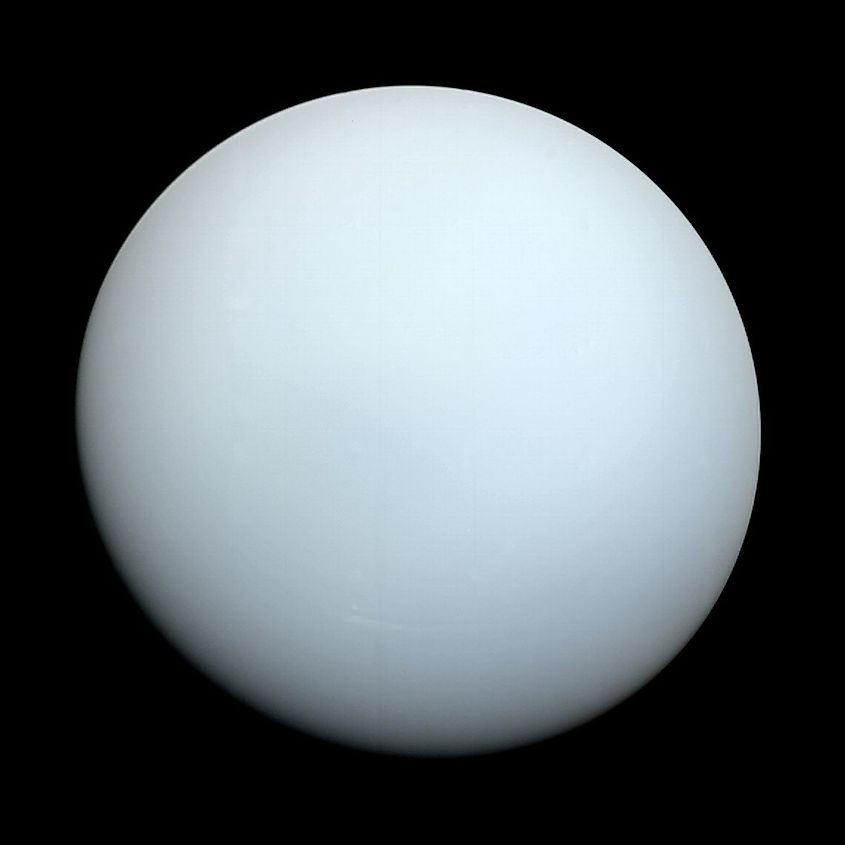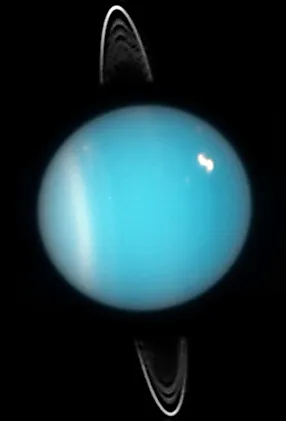
Why Does Uranus Spin On Its Side?
At first glance, the planet Uranus does not look like much. The planet’s atmosphere is rather devoid of any visible features, and when compared to the other giant planets of our solar system, Uranus looks boring. However, as is the case with every planet in our solar system, Uranus does possess some unique features. Most notably, Uranus rotates on its side. Every other planet in the solar system rotates horizontally, while Uranus rotates vertically. This is due to the fact that Uranus has the most extreme axis tilt in the solar system. Relative to the plane of the solar system, Uranus is oriented by about 97 degrees, making the planet’s axis nearly parallel to the plane of the solar system. Why does Uranus spin on its side?
Planetary Impact Theory

As of yet, the most likely explanation for the strange rotation of Uranus is that it was impacted by an Earth-sized planet around three to four billion years ago. Although our solar system contains eight planets now, things were not always this way. Rather, as many as a hundred planets may have formed along with the sun. Some of those planets were flung out of the solar system entirely, doomed to wander the emptiness of interstellar space as rogue planets. Others, however, collided, either destroying each other or merging together to form larger planets. It is believed that every planet in our solar system underwent one or more collisions, and the rotation of Uranus is just one example of a planetary collision.
Billions of years ago, Uranus rotated in exactly the same way as the other planets: side to side. Another planet approximately the same size as Earth eventually crossed paths with Uranus, impacting the planet and causing it to tip over onto its side. Now Uranus rolls around the sun like a kind of planetary wheel.
Consequences

The rotation of Uranus has some interesting impacts on the planet’s weather and seasons. For example, since Uranus does not rotate side to side, the planet experiences extremely long summers and winters. It takes Uranus around 84 years to orbit the sun, and for half of that time, only one side of Uranus faces the sun. This means that for 42 years, one side constantly faces the sun while the other side constantly faces away. When Uranus reaches the halfway point in its orbit, the night side now faces the sun and vice versa. Thus, winter and summer both last around 42 years for either side of the planet.
Unlike every other planet in the solar system, the equator of Uranus experiences less sunlight than the polar regions. Generally, equatorial regions face the sun while polar regions face away, resulting in equatorial regions receiving a higher amount of sunlight than polar regions. On Uranus, however, the opposite is occurring. Interestingly, although one might expect the poles of Uranus to be warmer than the equator, this is not the case. Rather, the equator of Uranus is warmer than the poles despite receiving far less sunlight. As of yet, the reason for this remains unknown.











